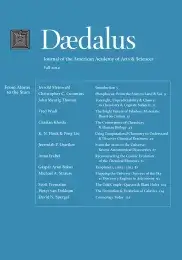The Convergence of Chemistry & Human Biology
Over the past two decades, “chemical biology” has emerged as the term of choice to describe the interface between chemistry and biology. As its name suggests, the field draws upon chemical insights and tools to understand or engineer living things. This essay focuses on the scientific, societal, and pedagogical potential of an emerging frontier for chemical biologists: namely, the study of Homo sapiens. My goal is to highlight the opportunities and challenges presented to chemistry by human biology at a time when it costs less to sequence an individual’s genome than it does to buy a car. But how does chemical biology differ from other similar-sounding fields? By first reaching a clear understanding of the scope of chemical biology, we may address more pertinent questions such as: What is the promise of the emerging interface between chemistry and human biology? Why is it important to nurture the relationship between these fields? And what are the attributes of individuals and environments that are well poised to contribute significantly to this interface?
To someone only vaguely familiar with disciplines such as biochemistry, structural biology, molecular biology, and medicinal chemistry, the introduction of yet another related name may seem unnecessarily confusing. How does chemical biology differentiate itself from these established fields? The simple answer is that it does not. Each of the aforementioned disciplines arose when a few talented and farsighted chemists pivoted from contemporary problems in chemistry (which, as we are taught in high school, attempts to explain the properties of matter by understanding its structure and reactivity at an atomic level) to emerging challenges in biology.
Biochemistry seeks to reconstitute the essence of a biological phenomenon by placing a well-defined set of molecules in a highly controlled environment such as a test tube. Not only does biochemistry play a critical role in elucidating cell function, it also facilitates deeper insight into the chemistry of life. Structural biology elucidates the structures of spectacularly . . .
